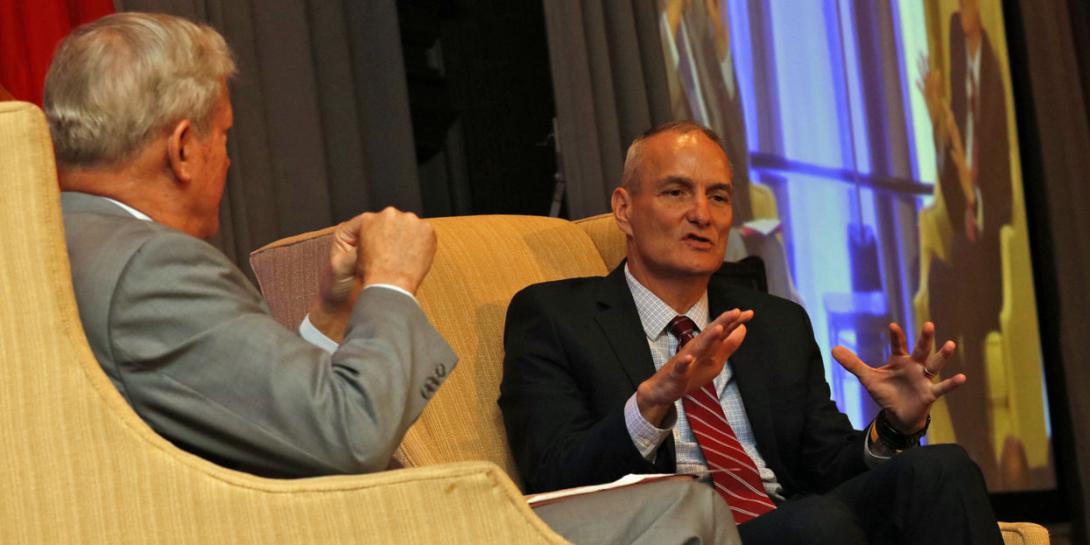Army to Release Data Strategy Soon
U.S. Army officials expect in the coming weeks or months to release a data strategy that will be closely aligned with its existing cloud strategy and are also building an enterprise cloud office, according to Gregory Garcia, the Army’s deputy chief information officer/G-6 and chief data officer.
Garcia made the remarks during an address and fireside chat on the second morning of the AFCEA TechNet Augusta conference in Augusta, Georgia.
“We have a data strategy that’s going to be processed in the next weeks and months. That’s going to get after making sure data is visible, accessible, understandable and interoperable,” he said.
Gregory Garcia, deputy CIO/G6, U.S. Army, says the Army is processing a data strategy that will be out in the coming weeks or months. Also, Army is working with international allies and partners on data sharing.#AFCEATechNet
— George Seffers (@gseffers) August 21, 2019
He indicated that the data strategy and cloud strategy are complementary. “Cloud is one of the great opportunities we have got to harness and take advantage of. We are in sync with the DOD with our hybrid cloud strategy. We’re looking to couple that strategy with the data strategy,” Garcia said.
The Army also is building a new office to help it better take advantage of cloud computing. “We are going to see the Army take direct action on cloud and data in the weeks and months ahead of us. We’re going to formulate an enterprise cloud office that I’m working on, staffing to build the office for. We’re going to be seeing resources directly applied to this team and to specific actions to move and drive the mission benefit and what the cloud offers in compute, storage, advanced services, artificial intelligence, machine learning and deep learning in a rapid fashion, and that’s really going to accelerate in 2020,” he reported, adding that there will be a “concerted effort” in 2021 and 2022.
Gregory Garcia, deputy CIO/G6, U.S. Army, says that in the #cyber, signal, intel world, there's something going on every day. Every single day there's something to defend. #AFCEATechNet
— George Seffers (@gseffers) August 21, 2019
The Army also is partnering with the Air Force on an effort a cloud service provider contract.
He called data “another of those great opportunities,” and said the Army is working with international partners on data sharing. “We’re spending a lot of time and thought with our international partners and allies about how to think about the fundamental proposition of sharing data more rapidly and with less variations with our international partners,” he said. “We’re really going to partner with allies and coalitions on how do you take risks on data sharing. I think we’ll see something specific come out to make that easier.”
Data, he indicated, is critical to the Army’s modernization efforts. Data fuels rapid and effective decision making. “Data makes the world go 'round or not. That’s the most important thing we can make available to all these modernization missions,” he added.
Gregory Garcia, deputy CIO/G6, U.S. Army: Data makes the world go around or not.#AFCEATechNet
— George Seffers (@gseffers) August 21, 2019
The network also is central to modernization, he offered. “From the tactical to the enterprise, we have a concept of a unified network that really goes across how, from the disconnected world we get through regional hubs, into cloud, into the enterprise, among clouds, into installations with the ability to have reliable, seamless, trusted communications in any environment. That’s a really important goal for us.”
Gregory Garcia, deputy CIO/G6, and chief data officer, U.S. Army, says the Army must have access to its data. "We can't have our data held hostage by data centers or applications."#AFCEATechNet
— George Seffers (@gseffers) August 21, 2019
Next-generation mobile networking technologies known as 5G also offer great opportunities for the Army, he noted. “A big game changer for us is 5G. 5G, if you study the technology, it has tremendous possibilities. But what we’re interested in is not the possibilities of 5G but the allocation of 5G,” Garcia declared. “We’re working hand-in-hand with OSD, doing some pathfinders, doing some test cases, doing some learning examples of where 5G can help in depot operations, ship-to-shore communications, dynamic spectrum sharing. These are critical things to understand as we move forward as a whole of nation.”
In addition, he noted that the service is partnering with the Defense Information Systems Agency and some of the other services on multifactor authentication pathfinder experiments. “We’ve also seen a lot of activity on multifactor authentication. We’re looking to make that a more combat-integrated capability so that would be more seamless.





Comments